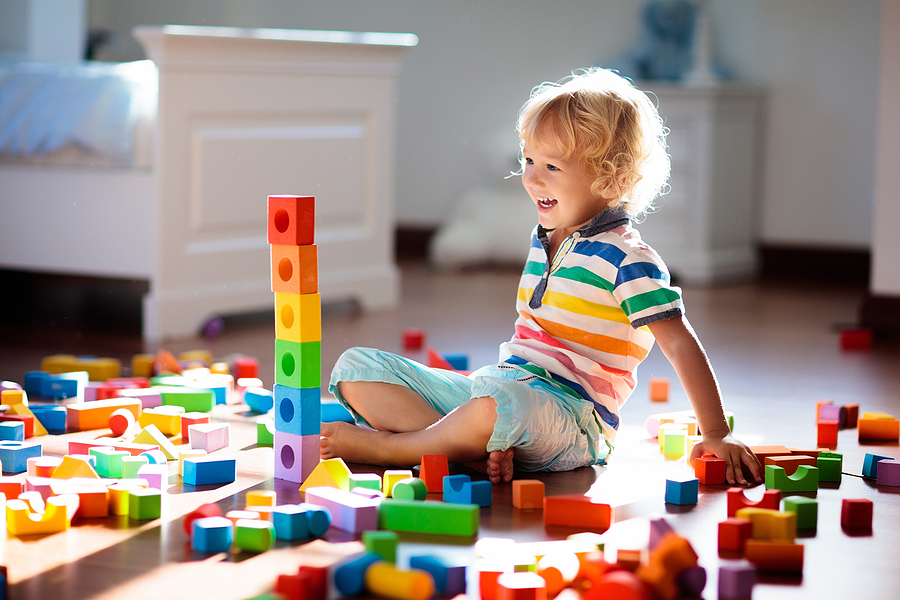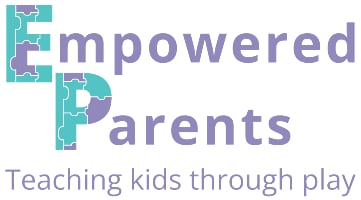Construction play plays a crucial role in a child’s healthy development.
Let’s take a look at some examples of construction play, the many benefits of constructing in early childhood, how you can encourage it both at home and in school, and some good construction toys your kids should play with.
What is Construction Play?
Construction play, also referred to as constructive or manipulative play, is the type of play a child engages in when manipulating objects or toys to construct or create something.
The child explores the materials and objects around them and learns how to create intentionally with them.
Children learn so much during construction play that the focus should always be on the process, not the product.
Construction play often leads to pretend play, as children bring their ideas to life in a physical form and then use them as part of a game of ‘acting out’ life scenarios.
Examples of Construction Play
There are many forms that construction play can take – from the simple act of drawing a house all the way to building it with engineering toys.
Here are a few examples of construction play activities:
Blocks
The most common of construction toys, blocks are a staple in every classroom and should be available in every home.
Children go through predictable stages of construction and require repeated exposure in order to reap all the wonderful benefits of block play.
Lego
Lego is another favourite among young children and remains a traditional educational toy that is still popular.
Children build their own creations and develop their creativity as they join these little bricks together.
Manipulative Toys
Manipulatives such as magnetic tiles, tangrams, pattern blocks and maths cubes are a part of this kind of play.
Box Construction
This is one of the best types of play for home or school and doesn’t involve buying expensive toys.
Children build freely with boxes in various shapes and sizes and can surprise you with the creativity that goes into these.
I regularly had children creating incredible rockets, buildings and other structures in the classroom.
All they need are waste materials, tape, scissors, and wood glue, and they’re set to go.

Construction Toy Sets
Most kinds of toys with separate pieces that children have to join together are considered construction toys.
Some pieces click together, are magnetic, are screwed into each other, are linked together, etc.
Woodworking
Children saw, hammer away with nails, learn to fit nuts and bolts and work on awesome wooden creations as they build on their construction skills.
Baking
Baking is an activity rich in learning experiences. Children not only get a chance to create with their hands, but they also learn a host of early measuring skills.

Playdough and Clay
While playdough might be moulded and pressed purely for enjoyment, as children get older they learn that playdough can be manipulated into shapes and used to create representations of objects.
A child might build a playdough house or dinosaur and this creation then becomes part of their pretend play.
Sand and Water Play
When children make sandcastles or cupcakes during sand play or measure out spoons of ‘leaf soup’ while playing with water, they are creating as part of their fantasy play.
Playing with sand and water is also a child’s first introduction to science concepts as they learn the properties of these substances and how they change form.
Adding objects to sand and water is a fun way to encourage loose parts play – a key aspect of construction play.
Puzzles
Puzzles are also a form of construction play. Children take the pieces and fit and join them together to create a picture. There are many reasons children should build puzzles from an early age.
Drawing
Even drawing is a form of constructive play. Learning to draw a person, for example, involves using drawing tools to create forms on paper, with a purpose.
What Age Does Construction Play Begin?
There are different stages of construction play but it begins as soon as toddlers start creating intentionally, at about two years of age.
There are also levels to their maturity and understanding of intentional building and creating.
Let’s take the example of building a tower. A 2-year-old may begin to start intentionally stacking blocks to make a tall ‘tower’ but is not yet trying to construct an actual building of a tower – she has learned this word by hearing an adult use it to describe her constructions.
Her intention is to see how many blocks she can successfully stack without the tower falling. Sometimes the intention is just to stack the blocks in order to knock them over.
An older child may decide to build an actual tower to keep a princess inside, complete with windows, a moat, a bridge, etc.
Constructive play is a developmental process that continues and should be encouraged, for several years.
Benefits of Construction Play in Early Childhood
Here’s a brief look at just a few construction play benefits for children.
Cognitive Development
As children build and construct they plan, resolve, generalize, analyse and discriminate. This creative activity stimulates the brain in many ways, causing them to think and build new concepts.
Early Maths Skills
While playing with bricks and blocks, children build an understanding of early number concepts. They learn about:
- The concept of order – this tower is taller than that one.
- The concept of number – this tower has more/fewer blocks than that one.
- The concept of sets – some bricks can be grouped by size and shape.
- Basic addition and subtraction – if I add a brick then it becomes taller, if I take one away then it becomes shorter.
- The concept of surface and volume – making a large outline of a house of blocks and standing inside it.
- Geometric shapes – building with cubes, cylinders, rectangular and triangular prisms.

Language
One of the adult’s main roles when aiding constructive play is to encourage kids to discuss what they are doing while playing and help develop their vocabulary.
This is one of the ways a child develops their early mathematical vocabulary, as well as building a rich general vocabulary.
Social Skills
Construction is often an activity that children engage in together. It requires a lot of cooperation, consideration and joint planning to execute.
It’s a wonderful opportunity for them to build their social skills while having fun and working towards a common goal.
Physical Development
Constructive play usually builds fine motor or gross motor skills, and often both.
Activities like drawing, cutting and pasting during box construction build fine motor coordination.
On the other hand, an activity such as playing with blocks builds large muscles too as a child carries, sorts, piles and packs the blocks.
Creativity
Since this type of play is open-ended, it is a wonderful way to develop creativity during the early years.
Creating a fort with blankets has far more learning potential than playing with a store-bought tent, as does drawing freely, instead of using colouring-in books.
Problem Solving
There are so many problems being solved as kids build and create that this type of play is one of the best for building problem-solving skills.
They have to experiment to figure out how to make the sand firmer, how to hold the tent up, or how to stop the door from falling off the house.

Confidence
The act of creating something is good for kids’ confidence.
A child who has persevered on a creation and can see a finished product will feel a sense of pride and achievement. Feeling competent is important for confidence.
Early Technology and Engineering Skills
As kids link and join pieces, they develop their early technology and engineering skills.
How to Encourage Constructive Play
Here are some tips to make sure your little ones are engaging and learning from this kind of play:
- Let children choose their own toys and do not over-organize their play. The more independent it is – the more learning will happen.
- Give age-appropriate toys that your children have success playing with and offer more complex toys later on.
- Allow kids the freedom to make a mess and get dirty. Instructing them to stay clean or not dirty their clothes is unfair and not conducive to learning.
- Store construction toys where they can be easily accessed – in neatly packed containers or on a low shelf. If materials are accessible and look inviting, children will naturally engage with them.
- Describe children’s creations to provide the correct vocabulary and enhance their language skills.
- Make a safe learning environment at home or school by providing rules – such as no throwing blocks, waiting for someone to play with something until you have a turn, etc.
- Involve your children in making a batch of homemade playdough (here are some playdough recipes without cream of tartar).
Construction Play Toys and Resources
These are some of the best kinds of construction play resources that you may want to keep at home or in your classroom. These are just a few examples.
Wooden Blocks
If you buy your children just one set of blocks, let it be a good quality set of large wooden blocks. It will last and will provide years of educational fun.
Lego
With so many sets of Lego available on the market, it can be confusing to choose and also tempting to buy sets of Lego with predetermined models to follow (such as a ‘build a helicopter’ set).

The best Lego to buy is a set of Classic Lego or larger Duplo bricks for toddlers.
Puzzles
Wooden puzzles are of the best quality and are better for building. They should also have a wooden frame to fit into.
When offering children puzzles, always start with ones they can successfully complete. Then, slowly increase the difficulty (smaller and more pieces). If a child is struggling through a puzzle, the activity becomes frustrating and does not foster confidence.
Manipulatives
Let kids play with other types of manipulatives, such as magnetic tiles and tangrams to encourage creative, open-ended play.
Engineering and Construction Sets
There are many sets on the market with pieces that link, join, screw together or are magnetic. These will provide hours of problem solving and skill building.
Woodworking Set
Let your kids develop their carpentry skills (and fine motor coordination) with a woodworking set.
These are just a few ideas to incorporate at home or in your teaching.
Discover more about the different types of play.

